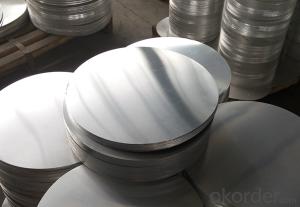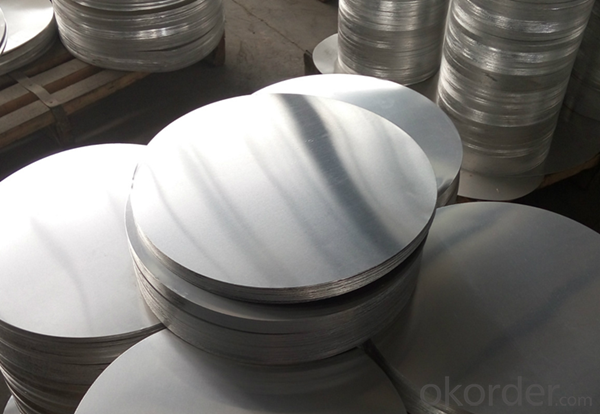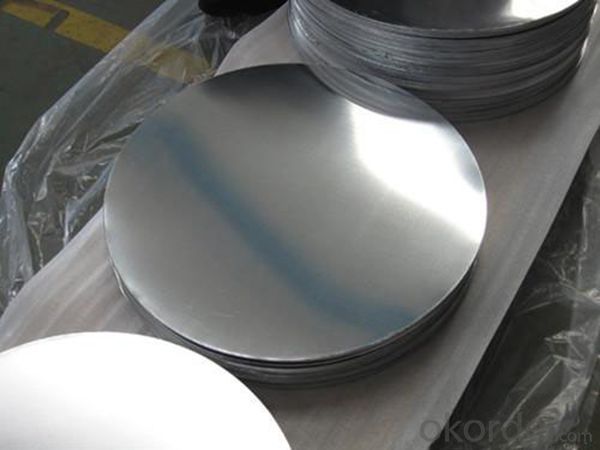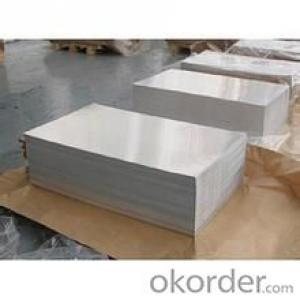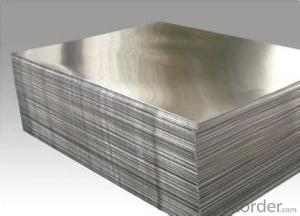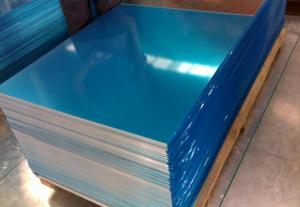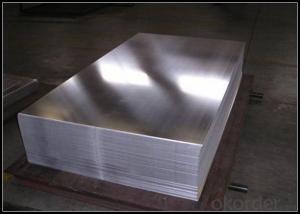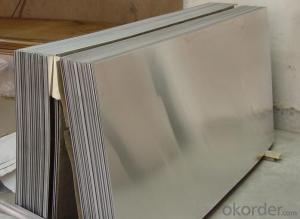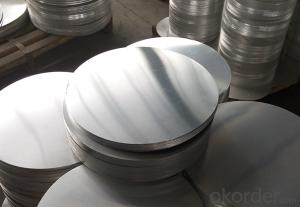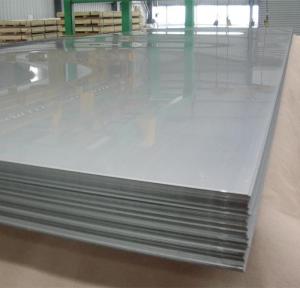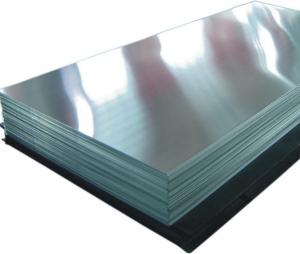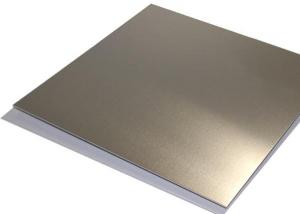Mill Finish Aluminum Pvc Sheets for Cooking Utensil
- Loading Port:
- Tianjin
- Payment Terms:
- TT OR LC
- Min Order Qty:
- 5 m.t.
- Supply Capability:
- 600 m.t./month
OKorder Service Pledge
OKorder Financial Service
You Might Also Like
Specification
wafter for cooking utensil
Professional aluminum product manufacturer
We have our own plant , Laboratory and engineer
Over 100 models can totaly satisfy your request
As powerful and stronger factory, our aluminum quality is very stable and reliable
2 years warranty period
Specifications:
Thickness:0.5mm-6.0mm
Width:100mm-900mm
Surface:Bright & smooth surface, not defects like white rust, oil patch.
Product Information :
Product | Aluminum Circle |
Alloy | 1050 1060 1070 1100 1200 |
Temper | O, H12, H14, H18 and H24... |
Thickness | 0.5mm-6.0mm |
Diameter | 100mm-900mm |
Lead Time | Within 30-45 days after receiving deposit |
Packing | Standard Exporting wooden pallets or based on customer requirement |
Material | Using high-tech machinery utilizing premium grade Aluminium Coil. Customized according to the needs and demands of the clients these can be availed at different technical specifications. |
Surface: | Bright & smooth surface, free from defects like white rust, oil patch, edge damage. |
Application | Aluminium Circles are used in Reflective Sign Boards, Road Furniture, Utensils, Sand witch Bottom, Cooker, Non-Stick etc. |
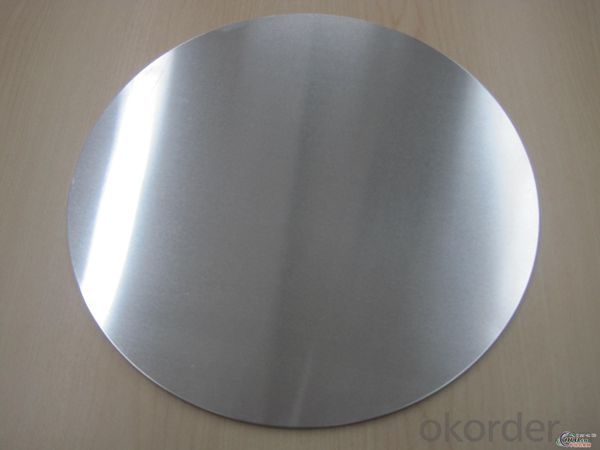
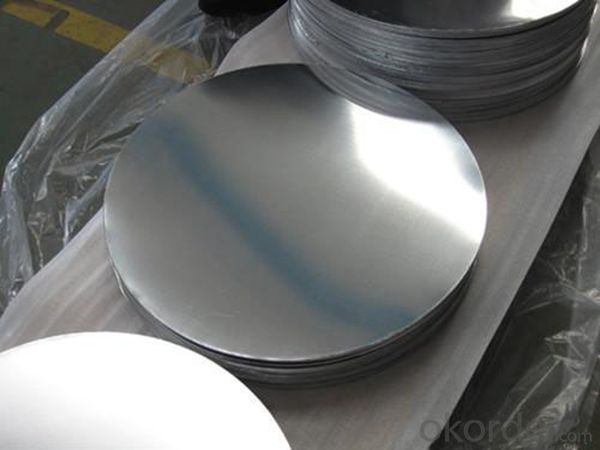
- Q: (1) Aluminum is malleable. (2) Aluminum reacts with sulfuric acid.(3) Aluminum conducts an electric current.(4)Aluminum has a density of 2.698 g/cm3 at STP.Explain why.
- statement 2 because it describes the nature of a reaction involving aluminium. The reaction is governed by its chemical properties such as the number of electrons is contains and its ability to for ions.
- Q: What kind of pattern aluminium plate has?
- Aluminum alloy decorative plate: Aluminum shallow pattern boardThe shallow pattern board of aluminum alloy is one of the excellent building decoration materials. It is exquisite pattern, color appearance, has the common advantages of ordinary aluminum plate, the stiffness is increased by 20%, anti fouling, anti scratch, anti abrasion ability has been improved, especially the increase of three-dimensional pattern and beautiful color, make the building more brightly.Aluminium alloy decorative panels: aluminium and aluminium alloy corrugated platesAluminum and Aluminum Alloy corrugated plate is widely used in the world of decorative materials, it is mainly used for wall decoration, can also be used for roofing, surface chemical treatment can have a variety of colors, good decorative effect, but also has a strong reflection of the light, very durable, the service life of up to 20 years. And it has a variety of colors, both decorative effect, but also has a strong ability to reflect sunlight. It can resist fire, moisture and corrosion.
- Q: Can aluminum sheet be used for heat sinks?
- Yes, aluminum sheet can be used for heat sinks. Aluminum has excellent thermal conductivity, making it a suitable material for dissipating heat. The sheet can be designed and fabricated into various shapes and sizes to effectively transfer and dissipate heat from electronic components or other heat-generating devices.
- Q: i want to build a smelter to recycle aluminum auto parts
- It requires high temperature (933K), and is inefficient for small quantities. Why not just sell it to your local recycler?
- Q: This question asks for guidance on selecting a trustworthy supplier for purchasing aluminum sheets.
- <p>To choose a reliable supplier of aluminum sheets, consider the following: Check their reputation by reading reviews and testimonials. Ensure they have a valid certification and adhere to industry standards. Evaluate their product quality by requesting samples or visiting their production site. Assess their delivery times and reliability. Confirm they offer competitive pricing without compromising on quality. Look for suppliers with good customer service and after-sales support. Finally, consider their financial stability and ability to fulfill large orders.</p>
- Q: I have a project on the aluminum element. What are the advantages and disadvantages of this element?...What are the risks/dangers?...Thank you so much ---And please tell me where I could find this information too.
- Cheers Watch this video: A little boy bites his brother's finger - His brother's reaction is hilarious! F
- Q: Can aluminum sheet be used for architectural façade systems?
- Indeed, architectural façade systems can make use of aluminum sheet. The lightweight, durable, and corrosion-resistant properties of aluminum make it a favored option for building exteriors. It can be easily manipulated and fabricated into a plethora of shapes and sizes, thus rendering it suitable for the creation of intricate designs and architectural elements. Moreover, aluminum can be coated or treated in various ways to enhance its appearance and shield it from weathering. The versatility, aesthetic appeal, and long-term cost-effectiveness of aluminum sheet make it an exceptional selection for architectural façade systems.
- Q: i added aluminum sulfate to the soil from the bag with out mixing it with water and my hydrangeas look very sad. It burned them i guess... What is best thing to do to take some of it out or all if i can? will adding large amounts of water to the soil help it clear or will it make it worse? please before they die!!!10points!!!
- Aluminum sulfate lowers the pH of soil (increases the acidity). To increase the pH, you need to add lime. The ideal pH for most plants is around neutrality, or pH = 7. I can't tell you how much lime to add, since I don't know how much aluminum sulfate you added. Try to add roughly the same amount as the aluminum sulfate and see if that helps. Overwatering may help some, as it will leach out some of the acid.
- Q: How does aluminum sheet perform in extreme temperatures?
- Aluminum sheet performs well in extreme temperatures as it has a high melting point of 660°C (1220°F) and exhibits excellent thermal conductivity. It can withstand both hot and cold temperatures without significant deformation or structural damage, making it suitable for various applications in extreme environments.
- Q: Are aluminum sheets suitable for chemical storage tanks?
- No, aluminum sheets are not suitable for chemical storage tanks as aluminum is highly reactive and can corrode when in contact with certain chemicals.
Send your message to us
Mill Finish Aluminum Pvc Sheets for Cooking Utensil
- Loading Port:
- Tianjin
- Payment Terms:
- TT OR LC
- Min Order Qty:
- 5 m.t.
- Supply Capability:
- 600 m.t./month
OKorder Service Pledge
OKorder Financial Service
Similar products
Hot products
Hot Searches
Related keywords
